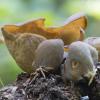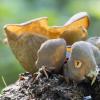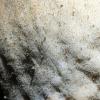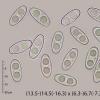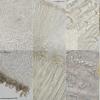
08-01-2026 21:22
 Blasco Rafael
Blasco Rafael
Hola, He recogido esta muestra de Orbilia sobre Re

07-01-2026 10:24
 Danny Newman
Danny Newman
Pezicula sp. on indet. hardwood Appalachian Highl

07-01-2026 22:22
 Danny Newman
Danny Newman
Tatraea sp. on indet. hardwood The Swag, Great Sm

07-01-2026 17:29
 Marc Detollenaere
Marc Detollenaere
Dear Forum,On a barkless Populus I found some smal

10-11-2021 17:33
 Riet van Oosten
Riet van Oosten
Add-on topic http://www.ascofrance.com/forum/7059

07-01-2026 10:05
 Danny Newman
Danny Newman
cf. Chaetospermum on XylariaCosby Campground, Grea

02-01-2026 17:43
MARICEL PATINOHi there, although I couldn't see the fruitbody, I

04-01-2026 17:45
 Stephen Martin Mifsud
Stephen Martin Mifsud
I was happy to find these orange asmocyetes which
Bluish Otidea
Enrique Rubio,
16-09-2019 21:28
Excipulum not reddish in Melzer's reactive, bright yellow in KOH (fresh material). Neither crystal-like aggregates among the hyphae of the medullary excipulum, nor striate exudates on these cells. This species is relatively common in Asturias (north of Spain) on calcareous soils of forest without conifers.
I think that the strongly yellow reaction in KOH of the fresh ectal excipulum, and the rest of the characters I have described separate it from O. caeruleopruinosa, O. bufonia and Otidea mirabilis.
What do you think?


